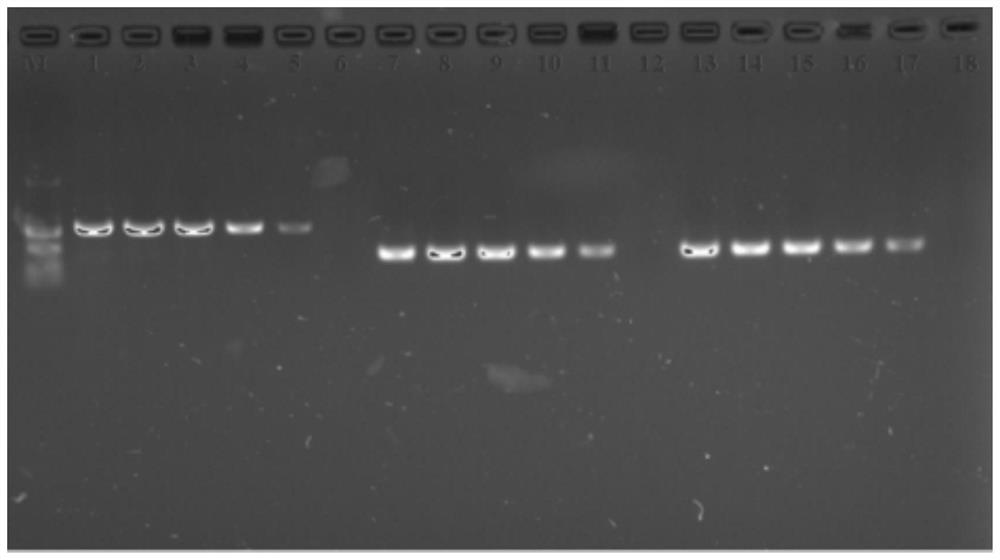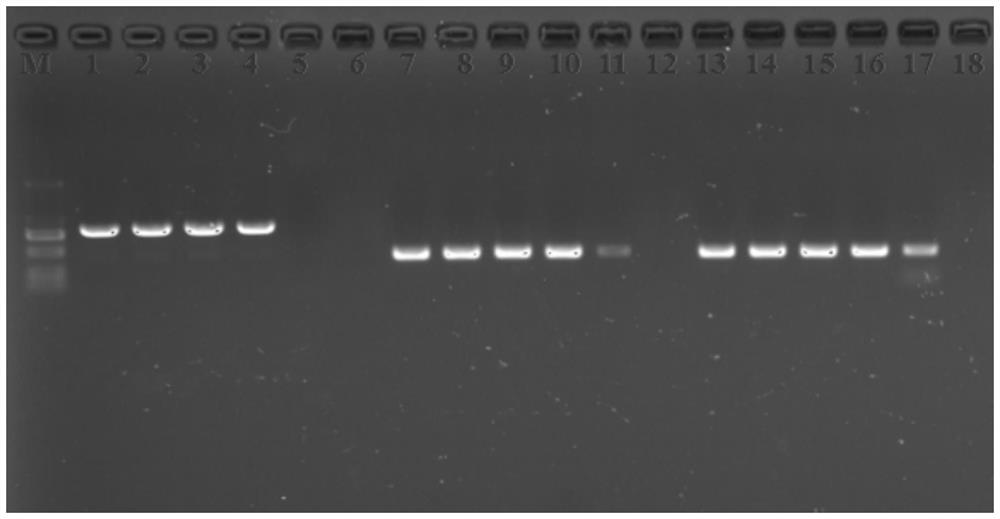Nested PCR reagents and detection system for detecting pear pollen pear fire blight bacteria
A technology of fire blight bacteria and pink pears, which is applied to the nested PCR reagent and detection field for detecting pear pollen blight blight bacteria, can solve problems such as missing and lack of detection methods, and achieve the goal of ensuring safe and efficient production and sustainable development Effect
- Summary
- Abstract
- Description
- Claims
- Application Information
AI Technical Summary
Problems solved by technology
Method used
Image
Examples
Embodiment 1
[0033] Embodiment 1, the nested PCR detection of Yali pollen Phytophthora amylovora
[0034] 1. Design of detection primers for Yali pollen Phytophthora amylovora
[0035]The primers used in this implementation test are three pairs of primers derived from the E. amylovora pathogen plasmid pEA29, the first primer pair AJ75 / AJ76, the second primer pair PEANT1 / PEANT2 and the third primer pair p29A / p29B, the sequences of the three pairs of primers, The loci and the size of the amplified bands are shown in Table 1. Primers were synthesized by Sangon Bioengineering (Shanghai) Co., Ltd. As shown in Table 1, the primer list for the detection of E. amylovora from Yali pollen.
[0036] Table 1
[0037]
[0038] 2. Culture of Erwinia amylovora
[0039] After the prepared LB medium was sterilized by steam at 121°C and 0.1MPa for 20 minutes, it was poured into a plate on an ultra-clean workbench, and allowed to cool for later use. Take the preserved Erwinia amylovora strain out of ...
Embodiment 2
[0065] Embodiment 2, the establishment of mock sample nested PCR detection system
[0066] 1. Take 10g of healthy Yali pollen and add it to 50ml of sterilized PBS solution. Shake at 180 rpm on a constant temperature shaker at room temperature for 1 hour. Filter with sterilized filter paper in a clean bench. Take 7 sterilized 1.5ml centrifuge tubes, and centrifuge each Add 1ml of filtrate to the tube, centrifuge at 13000rpm for 10min, discard the supernatant, pour out the supernatant as much as possible, add 900μL of sterilized water to suspend, and finally, add 100μL of 7 concentration gradient bacteria suspensions to the 7 centrifuge tubes, and vortex Mix well and set aside. Sensitivity detection of simulated samples According to the reaction system established above, 2 μL of simulated samples with the first 5 gradient concentrations were taken for sensitivity detection, and ddH 2 O is blank control, detected by 1% agarose gel electrophoresis.
[0067] 2. Sensitivity of moc...
PUM
 Login to View More
Login to View More Abstract
Description
Claims
Application Information
 Login to View More
Login to View More - R&D
- Intellectual Property
- Life Sciences
- Materials
- Tech Scout
- Unparalleled Data Quality
- Higher Quality Content
- 60% Fewer Hallucinations
Browse by: Latest US Patents, China's latest patents, Technical Efficacy Thesaurus, Application Domain, Technology Topic, Popular Technical Reports.
© 2025 PatSnap. All rights reserved.Legal|Privacy policy|Modern Slavery Act Transparency Statement|Sitemap|About US| Contact US: help@patsnap.com



